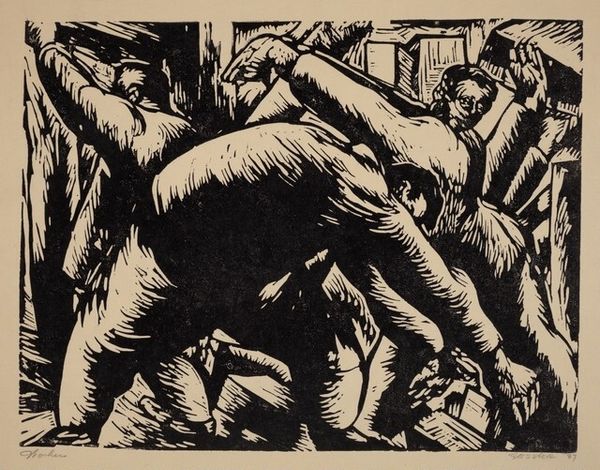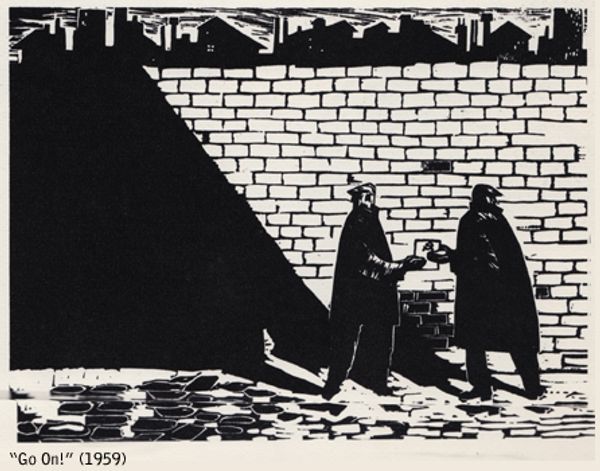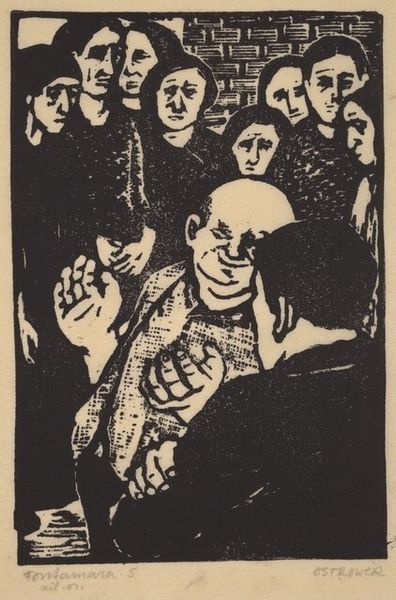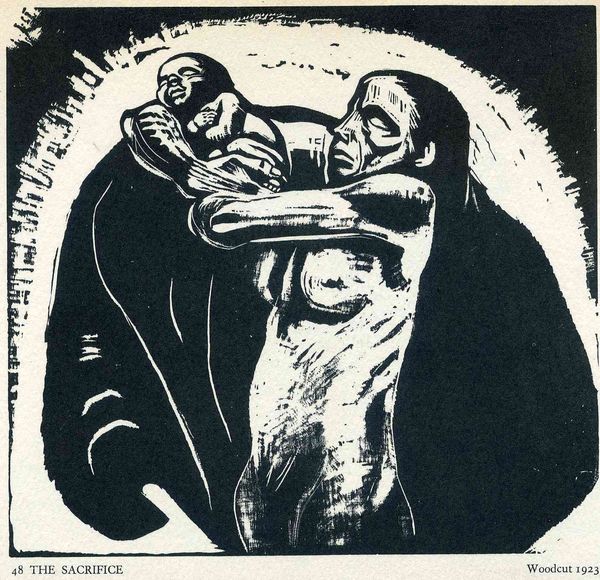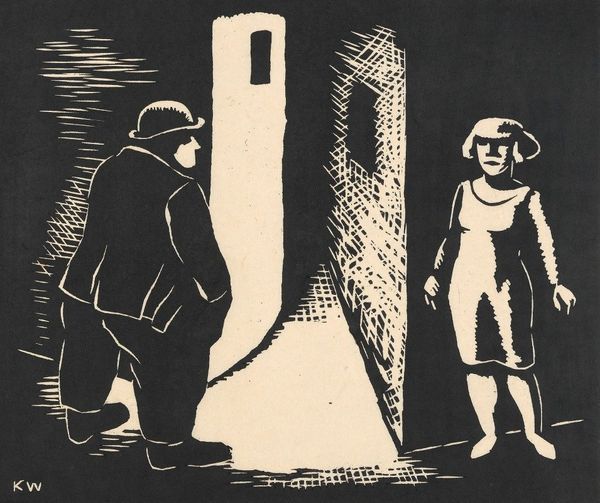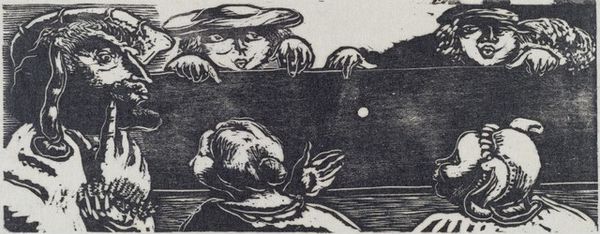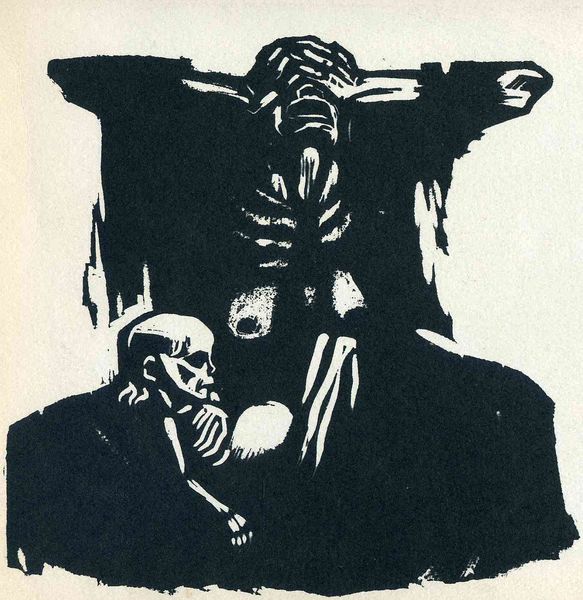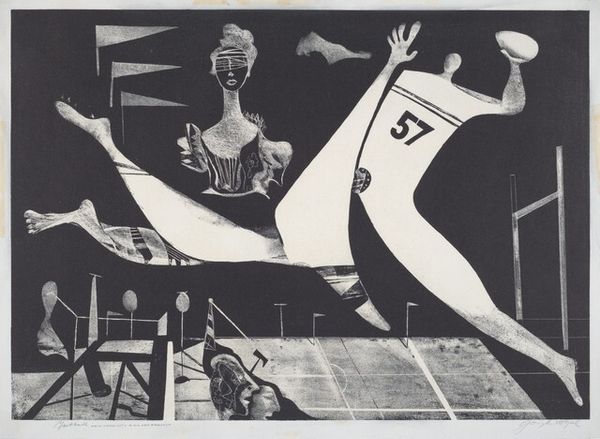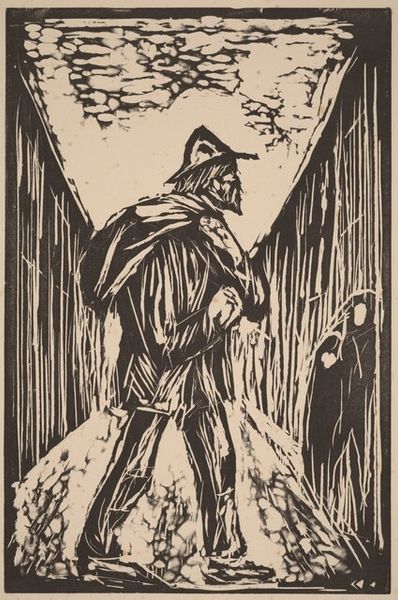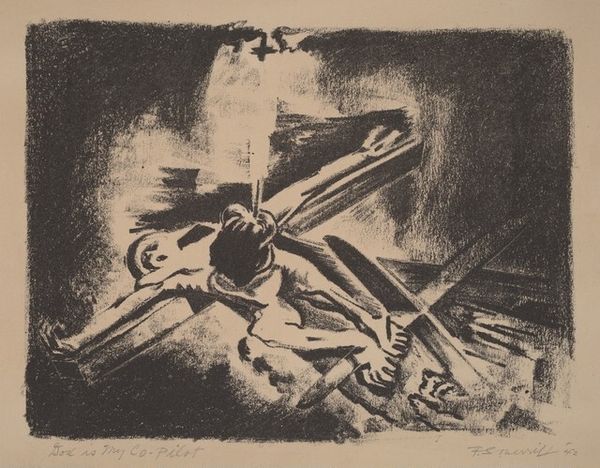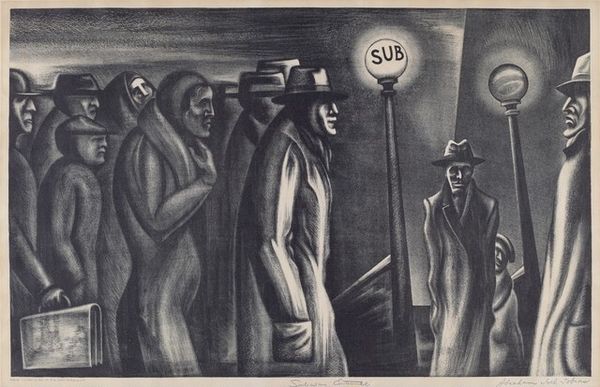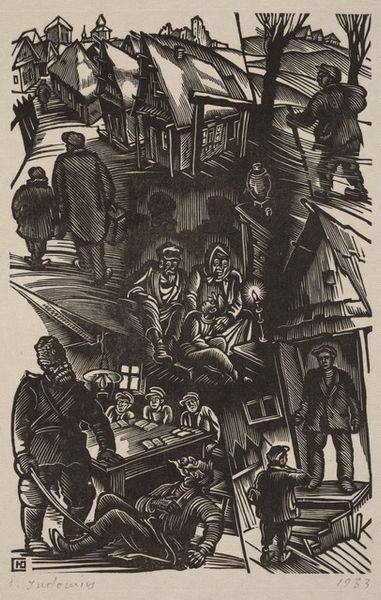
Copyright: Jules Perahim,Fair Use
Curator: Jules Perahim's "The Argument," created in 1958, strikes me immediately with its bold contrast. What's your initial take? Editor: It's stark, powerful. There’s a sense of impending violence. The high-contrast woodcut technique really amplifies the tension. It feels almost theatrical, or perhaps something from a very dark fable. Curator: Indeed. Perahim, deeply involved in social realism and later surrealism, produced this work amidst a backdrop of shifting political climates in Romania. You can sense it’s not just an aesthetic choice but loaded with socio-political undertones. Editor: Absolutely. That central figure, a cleric brandishing a cross, juxtaposed with the figures seemingly armed with…shovels, maybe? There’s a collision of spiritual authority and something far more grounded, maybe a peasant revolt. How was this received at the time? Curator: Precisely. And I think reception is a complex point. Perahim's position in the Eastern Bloc certainly shaped the interpretation of his narratives. Officially sanctioned art needed to align with certain socialist ideals, but this piece allows multiple readings, questioning authority, not necessarily endorsing it. The masses versus organized religion is clearly present. Editor: Yes, it raises such interesting questions about the role of religion – is it offering salvation or condoning this clash? Even the single figure standing apart, seemingly clutching some sort of effigy. The figures are generalized, types, not portraits, and the heavy use of black only heightens that. The message is a critique. Curator: It certainly deviates from socialist realism's celebratory mode, as promoted at the time. But this allows us to recognize and see through a period that can, at times, come off as quite homogenous. Editor: For sure. It’s a crucial piece, resisting simplification. It gives a voice to the complexities, and I’d even argue to the silences and suppressions inherent to that period. Curator: It makes me consider how artists operate within and against dominant narratives, and this particular print becomes not only a powerful artistic statement, but also a historical document offering us a unique and multifaceted lens into the era. Editor: Agreed. Perahim’s work provides a vital counter-narrative to the sometimes monolithic story we receive about that historical period, reminding us to constantly question what we think we know.
Comments
No comments
Be the first to comment and join the conversation on the ultimate creative platform.
